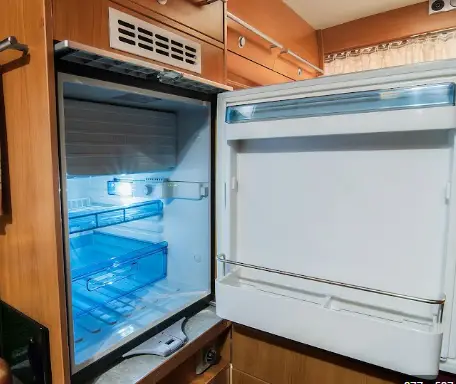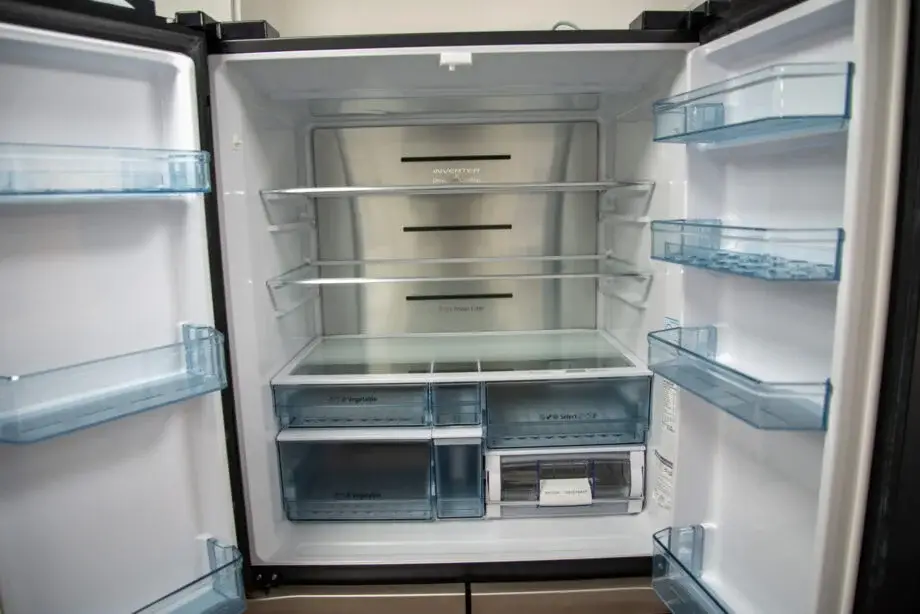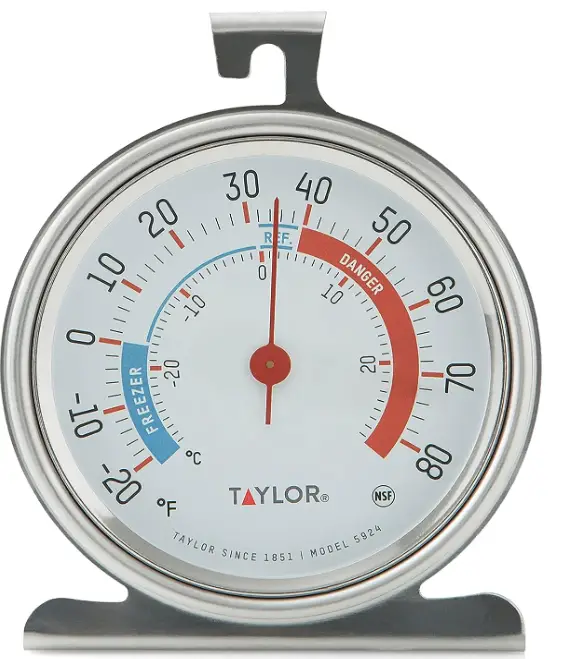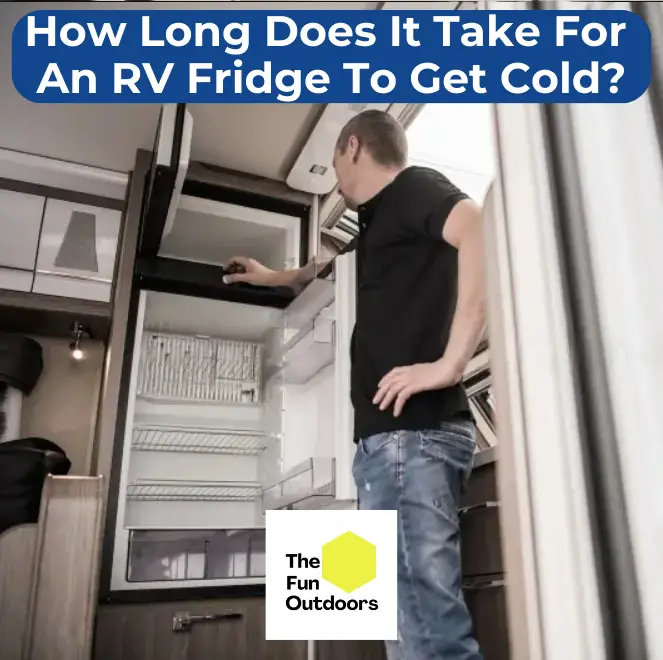RV refrigerators are a crucial part of any camping trip, allowing you to store perishable food items and keep them fresh for longer periods. One of the most common questions that campers have is: how long does it take for an RV fridge to get cold?
RV fridges can take as little as 6 hours or as much as 24 hours to get cold. Unlike residential fridges, which use a compressor to cool the refrigerator, RV fridges are absorption-style refrigerators that require more time to exchange heat out of the fridge.
This means that it’s important to plan ahead and turn on your RV fridge at least a day before you plan to use it to ensure that it is cooled down and ready to go. W
Key Takeaways
- It takes around 6 to 24 hours for an RV fridge to get cold due to its absorption-style cooling system.
- Planning ahead and turning on your RV fridge at least a day before you plan to use it can help ensure that it is cooled down and ready to go.
- Understanding the type of fridge you have, how to optimize its efficiency, and how to monitor its temperature can help ensure that your RV fridge stays cold and safe to use throughout your camping trip.
How Long For RV Fridge To Get Cold?

When it comes to RV refrigerators, one of the most common questions people ask is, “how long will it take for my RV fridge to get cold?”
The answer to this question can vary depending on several factors, such as the size of the fridge and its type.
Factors Influencing Cooling Time
Here are some of the key factors that influence how long it takes for an RV fridge to get cold:
- Size of the Fridge: The size of the fridge can have a significant impact on how long it takes to get cold. Smaller fridges tend to cool down faster than larger ones, as there is less space for the cool air to circulate.
- Type of Fridge: There are two main types of RV refrigerators: absorption and compressor. Absorption fridges tend to take longer to cool down than compressor fridges, as they rely on a heat source to operate.
- Ambient Temperature: The ambient temperature around the fridge can also affect how long it takes to cool down. If the temperature outside is very hot, it will take longer for the fridge to reach its desired temperature.
- Airflow: Good airflow is essential for an RV fridge to cool down quickly. If the fridge is packed too tightly, or if there are obstructions blocking the vents, it will take longer to cool down.
Generally, it can take anywhere from 6 to 24 hours for an RV fridge to get completely cold.
This is just an estimate, and the actual cooling time can vary depending on the factors mentioned above.
To speed up the cooling process, there are a few things you can do.
For example, you can ensure that the fridge is empty when you first turn it on, to allow for better airflow.
You can also use frozen water jugs to help cool down the fridge more quickly. Additionally, using a fridge fan can help improve airflow and speed up the cooling process.
Understanding the RV Refrigerator
When it comes to RV refrigerators, understanding how they work is essential to ensure that they function properly. RV refrigerators typically operate on absorption-style cooling systems, which differ from the compressor-style systems found in residential refrigerators.
Cooling Process
The cooling process in an RV refrigerator involves three main components: hydrogen, ammonia, and water. The process begins with a heat source, such as propane, which heats up the water and ammonia mixture in the system. This causes the ammonia to vaporize and rise to the top of the system, where it is absorbed by a hydrogen-rich solution. This creates a chemical reaction that produces heat and separates the ammonia from the water.
The ammonia then moves through a series of coils, where it condenses back into a liquid and releases heat. The heat is then dissipated outside of the RV, typically through a vent or chimney. As the ammonia cools down, it turns back into a vapor and is absorbed by the hydrogen-rich solution, starting the process all over again.
One of the benefits of absorption-style refrigerators is that they do not require electricity to operate. However, they do take longer to cool down than compressor-style refrigerators, often taking up to 24 hours to reach the desired temperature.
It is important to note that absorption refrigerators operate using chemistry, which means that any issues with the system’s components, such as leaks or clogs, can cause the refrigerator to malfunction. Regular maintenance and proper use can help prevent these issues and ensure that the RV refrigerator operates efficiently.
In summary, understanding the chemistry behind absorption-style RV refrigerators can help RV owners maintain and troubleshoot their refrigerators properly. By following proper maintenance and usage guidelines, RV owners can ensure that their refrigerators function optimally and keep their food and drinks cold during their travels.
See Related: 15 Easy Fixes for an RV Fridge Not Cooling
How To Get RV Fridge Cooled Down Faster

If you’re planning a camping trip, you’ll want to make sure your RV fridge is cooled down before you head out.
Fortunately, there are a few things you can do to speed up the process and get your fridge cooled down faster.
Empty The RV Fridge
Before you start cooling down your RV fridge, make sure it’s empty. This will help the fridge cool down faster since there won’t be any warm items in the fridge.
If you’re traveling with perishable items, pack them in a cooler with ice until your fridge is ready.
Use A Refrigerator Circulating Fan
An RV refrigerator circulating fan can help cool down your RV fridge faster by circulating cool air throughout the fridge.
These fans are designed to fit inside your fridge and can be powered by batteries or plugged into a power source.
They’re relatively inexpensive and can be found at most camping supply stores.
Put Ice In Your RV Fridge
Another way to cool down your RV fridge faster is to put ice in it.
You can either use bags of ice or freeze water bottles and place them in the fridge.
Make sure to leave enough space between the items in your fridge so that the cool air can circulate.
Keep Space Between Items
Finally, make sure to keep space between items in your RV fridge.
This will allow cool air to circulate and help the fridge cool down faster.
If you pack your fridge too tightly, it will take longer for the fridge to cool down, and you may end up with warm or spoiled food.
Optimizing RV Fridge Efficiency

To get the most out of an RV fridge, it is important to optimize its efficiency. Here are some tips to help make sure your fridge is working at its best:
- Level the fridge: Make sure the fridge is level. An unlevel fridge can cause cooling problems and even damage the fridge. Use a level to check if it is level or not.
- Make sure there is enough space: Keep enough space between the items in the fridge. Overcrowding the fridge can cause cooling problems. Make sure there is enough space for air to flow around the items.
- Keep the fridge empty: Keep the fridge empty when not in use. This will help to keep the fridge cool and reduce the amount of time it takes to cool down when you need it.
- Clean the vents: Clean the vents regularly to ensure that air flows through the fridge properly. Blocked vents can cause cooling problems.
- Use water to help cool the fridge: Putting a container of water in the fridge can help to keep the fridge cool. The water will absorb heat and help to keep the fridge cool.
- Use a fridge fan: A fridge fan can help to circulate air inside the fridge, which can help to keep the fridge cool.
- Ensure proper air flow: Make sure there is proper air flow around the fridge. Place the fridge in a shaded area and use small fans to help circulate air around the fridge.
See Related: How to Keep RV Fridge Door Closed While Traveling
Temperature Regulation and Monitoring

Temperature regulation is a crucial aspect of keeping food safe and fresh in an RV fridge. To ensure that the fridge is working correctly, it is essential to monitor the temperature regularly. Most RV fridges are designed to maintain a temperature of 40 degrees Fahrenheit or below.
One way to monitor the temperature is by installing a thermometer inside the fridge. This allows you to check the temperature at a glance and make adjustments as needed. It is recommended to keep the thermometer near the temperature sensor for accurate readings.
Another way to regulate the temperature is by adjusting the temperature control settings. The recommended temperature for an RV fridge is below 40 degrees Fahrenheit. However, it is best to check the manufacturer’s instructions for specific temperature recommendations for your fridge model.
It is also essential to ensure proper airflow inside the fridge. Overpacking the fridge can restrict airflow and cause uneven cooling, leading to hot spots. It is best to keep the fridge organized and leave some space between items for proper airflow.
In conclusion, monitoring and regulating the temperature is crucial for keeping food safe and fresh in an RV fridge. Installing a thermometer and adjusting the temperature control settings are effective ways to maintain the recommended temperature of below 40 degrees Fahrenheit. Proper airflow is also essential for even cooling.
Refrigerator Maintenance and Safety
Maintaining an RV refrigerator is crucial for its proper functioning and safety. Here are some tips to keep your RV fridge in good condition and avoid any damage or safety hazards.
Regular Maintenance
Regular maintenance of the RV refrigerator ensures its longevity and proper operation. Here are some maintenance tips:
- Keep the fridge clean and free from debris. Wipe down the interior with a damp cloth and mild soap.
- Check the seals around the door to ensure they are tight and free from cracks or damage. Replace them if necessary.
- Keep the fridge level to prevent any damage to the cooling system.
- Defrost the fridge regularly to avoid ice buildup on the evaporator fins.
See Related: How to Check Ammonia Level in RV Refrigerator
Safety Precautions
RV refrigerators can pose safety hazards if not used properly. Here are some safety precautions to follow:
- Never store flammable materials or liquids in the fridge.
- Do not overload the fridge as it can affect its proper operation.
- Do not run the fridge while driving as it can cause a fire hazard.
- Always turn off the fridge before refueling the RV.
See Related: How Much Propane Does an RV Refrigerator Use?
Auto Mode
Many RV refrigerators have an auto mode that switches between gas and electric power depending on availability. Here are some tips for using the auto mode:
- Make sure the RV is level before using the auto mode.
- Keep an eye on the fridge temperature to ensure it is maintaining the desired temperature.
- Only use the auto mode when the RV is stationary.
Following these maintenance and safety tips can help ensure the proper functioning of your RV refrigerator and avoid any damage or safety hazards.
RV Fridge Tips for Campers
When camping or boondocking in an RV, having a functional refrigerator is crucial for keeping food and drinks cold and safe to consume. Here are some tips to help campers ensure their RV fridge is running efficiently:
- Pre-cool the fridge: Before loading the fridge with perishable items, it is recommended to pre-cool the fridge for at least 24 hours. This will help the fridge reach the desired temperature faster and keep the food fresh.
- Keep the fridge level: RV fridges work best when they are level. If the fridge is not level, the cooling unit may not function properly, causing the fridge to not cool properly. This is especially important when camping on uneven ground.
- Avoid overloading the fridge: Overloading the fridge can cause it to not cool properly. It is recommended to leave some space between items in the fridge to allow for proper air circulation.
- Run the fridge on propane when boondocking: When camping off-grid or boondocking, running the fridge on propane can help conserve battery power. However, it is important to ensure the propane system is functioning properly and to follow all safety precautions.
- Regularly clean the fridge: Regularly cleaning the fridge can help it run more efficiently. This includes wiping down the shelves and walls, checking for any expired items, and defrosting the freezer when necessary.
By following these tips, campers can ensure their RV fridge is running efficiently and keeping their food and drinks cold and safe to consume.
Wrapping Things Up
In conclusion, it is important to remember that an RV fridge takes longer to get cold than a regular residential fridge. On average, it takes about 6 to 24 hours for an RV fridge to get cold.
To ensure that your RV fridge gets cold as quickly as possible, it is recommended that you turn it on at least a day before you plan to use it. Additionally, you should make sure that the fridge is empty before starting the cooling process to allow for greater airflow.
There are also several methods that can be used to cool an RV fridge faster, such as using bags of ice or a fridge fan. Using frozen water jugs is also an effective way to keep the fridge cold for longer periods of time.
Overall, taking the time to properly cool your RV fridge before your trip can ensure that your food stays fresh and safe to eat. By following these tips and tricks, you can enjoy a stress-free camping experience with a cold and reliable fridge.

